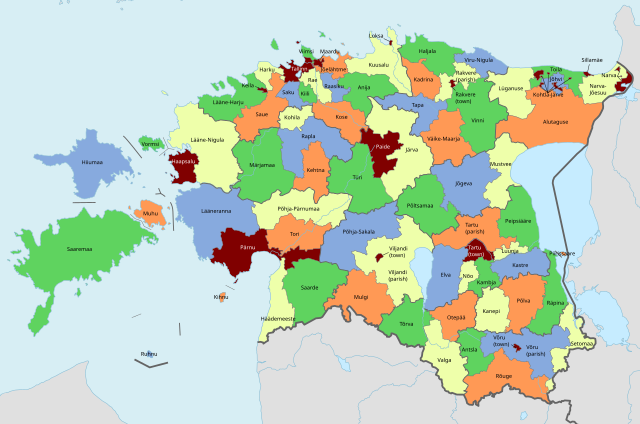Estonia is a unitary country with a single-tier local government system. Local affairs are managed autonomously by local governments.
Since administrative reform in 2017, there are in total 79 local governments, including 15 towns and 64 rural municipalities. All municipalities have equal legal status and form part of a county, which is a state administrative unit.[1] Representative body of local authorities is municipal council, elected at general direct elections for a four-year term. The council appoints local government, headed by a mayor. For additional decentralization the local authorities may form municipal districts with limited authority, currently those have been formed in Tallinn and Hiiumaa.[2]
Separately from administrative units there are also settlement units: village, small borough, borough, and town. Generally villages have less than 300, small borough have between 300 and 1000, borough and town have over 1000 inhabitants.[2]
Database which consists of info about Estonian administrative units and settlements, is called EHAK (abbreviation for Estonian Eesti haldus- ja asustusjaotuse klassifikaator).[3]
Counties

| 50 km |
Parishes or municipalities

See also
References
Wikiwand in your browser!
Seamless Wikipedia browsing. On steroids.
Every time you click a link to Wikipedia, Wiktionary or Wikiquote in your browser's search results, it will show the modern Wikiwand interface.
Wikiwand extension is a five stars, simple, with minimum permission required to keep your browsing private, safe and transparent.